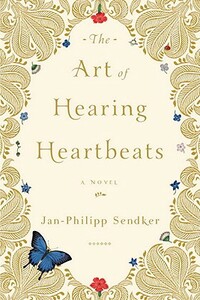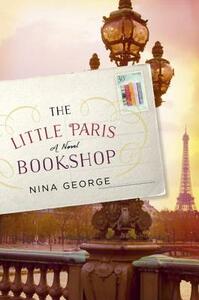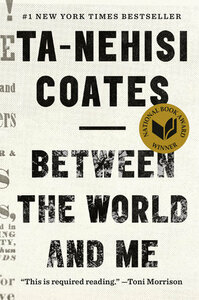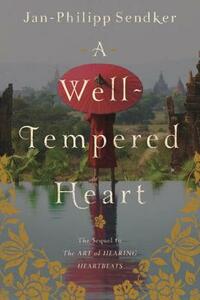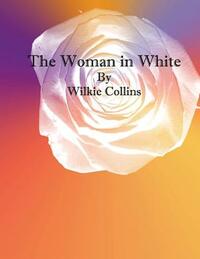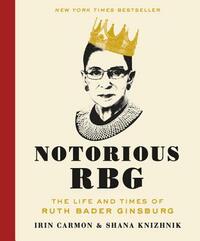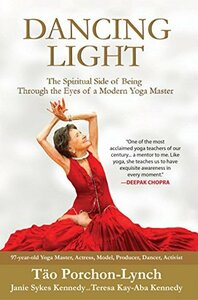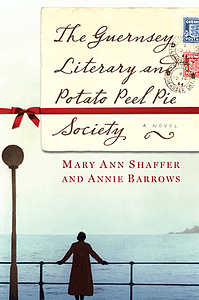Take a photo of a barcode or cover
laurieb755's Reviews (785)
Sucked in by masterful story telling, I benefited by being home with the flu and able to fully submerge myself in U Ba's story over just a few days. This is a beautiful, heartening, thoughtful, touching tale of love and understanding, of beauty and life. I could not get angry on behalf of Tin Win or heartsick on his or Mi Mi's behalf. Something about Sendker's prose planted me in Bruma, with the patience and forgivingness of the monks in the monastery.
It was either Ginny or Ann, friends who are librarians, from whom I heard of this book. Thank you.
It was either Ginny or Ann, friends who are librarians, from whom I heard of this book. Thank you.
Parts of this story were utterly delightful, placing me right there with Perdu, Max, Cuneo and Samantha on the Literary Apothecary barge steaming south, along with most of their singular and together adventures from then on.
And parts of this story were drudgery to read – Manon's journal entries, Perdu's remembrances of his time with Manon. I find this most curious, as Manon is the lightening rod around which the rest of the story takes off. But I wonder if some other story could have served just as well, or even better as the catalyst. I found Manon an irritant each time she popped up, getting in the way of the real story, the livelier imagination, the pieces that rendered this tale three stars. She did not help the narrative; perhaps some other conveyance would have buoyed this tale beyond three stars. Alas, she just weighed it down.
And parts of this story were drudgery to read – Manon's journal entries, Perdu's remembrances of his time with Manon. I find this most curious, as Manon is the lightening rod around which the rest of the story takes off. But I wonder if some other story could have served just as well, or even better as the catalyst. I found Manon an irritant each time she popped up, getting in the way of the real story, the livelier imagination, the pieces that rendered this tale three stars. She did not help the narrative; perhaps some other conveyance would have buoyed this tale beyond three stars. Alas, she just weighed it down.
I had to read this book slowly. The first part of Ta-Nehisi Coates' book was difficult for me to understand. I took in his plethora of emotions and feelings but I had to work at deciperhing his words – how he strung his sentences – and that slowed me down.
The second and remaining parts of his book were easier for me to read (perhaps I was accustomed to his writing style) but certainly not easier to read for what he had to say. This is a powerful open letter to his son that goes beyond a parent's concern for his child. For me as a freckle-faced, red-headed, third generation "white" American taking in his words and concerns for his son, my response was and remains intense. I never before understood the complexity of history and its impact on non-white lives. I do not know what to do with this new information. I know that one person cannot and does not speak for others; perhaps he speaks only for himself but perhaps he states what hundreds of others feel but do not have the words to describe?
I do know that Ta-Nehisi Coates is a powerful writer and his book should be read by students, adults, politicians, the curious, the sympathetic and the skeptical. In this era of presidential politicking, where elected representatives have the honor of serving and representing "we the people", the country is being bombarded by the likes of Trump and Cruz, and I question so much about this country where I was born, raised and live. The worst side of humanity is being brought out by these characters – curiously all white men – who have the indecency to offer themselves up as candidates of "we the people". It is confusing, confounding, and disillusioning.
The second and remaining parts of his book were easier for me to read (perhaps I was accustomed to his writing style) but certainly not easier to read for what he had to say. This is a powerful open letter to his son that goes beyond a parent's concern for his child. For me as a freckle-faced, red-headed, third generation "white" American taking in his words and concerns for his son, my response was and remains intense. I never before understood the complexity of history and its impact on non-white lives. I do not know what to do with this new information. I know that one person cannot and does not speak for others; perhaps he speaks only for himself but perhaps he states what hundreds of others feel but do not have the words to describe?
I do know that Ta-Nehisi Coates is a powerful writer and his book should be read by students, adults, politicians, the curious, the sympathetic and the skeptical. In this era of presidential politicking, where elected representatives have the honor of serving and representing "we the people", the country is being bombarded by the likes of Trump and Cruz, and I question so much about this country where I was born, raised and live. The worst side of humanity is being brought out by these characters – curiously all white men – who have the indecency to offer themselves up as candidates of "we the people". It is confusing, confounding, and disillusioning.
At first I thought this book a disappointment. Julia in New York was not interesting to me. In the ten years since her visit to Burma/Rangoon, she lost the sensitivity that seemed to be developing during her visit with her brother U Ba. But I stayed with Sendker's story and am extremely pleased to have done so.
Jan-Philipp Sendker has twice now conjured up a story that grabbed me at the heart and touched my soul. I have several times caught myself wondering if his stories are true, for how could he imagine such intensity of feeling, of sensing, of surroundings, of anguish and love. Of detail. Not just detail in descriptions but detail in the art of being.
These are beautiful stories, this one and The Art of Hearing Heartbeats, and I am glad for having met their inhabitants.
Jan-Philipp Sendker has twice now conjured up a story that grabbed me at the heart and touched my soul. I have several times caught myself wondering if his stories are true, for how could he imagine such intensity of feeling, of sensing, of surroundings, of anguish and love. Of detail. Not just detail in descriptions but detail in the art of being.
These are beautiful stories, this one and The Art of Hearing Heartbeats, and I am glad for having met their inhabitants.
I scroll through my friends' goodreads to see what they are reading and liking, and that is how I came upon Florence Gordon. As I tended to read most of this book prior to bed (till this evening, when I stayed up to finish it), the shorter chapters were appealing because they were digestible in the time set aside for reading.
Brian Morton crafted characters that seemed real, unfamiliar to me but nonetheless real. And I didn't quite expect the story to end as it did. Well, I should have expected it, but I wanted a different end. Okay, if there had been a different end then the characters probably would not have remained believable. So there you have it, I am left pondering, which is probably a big complement to Morton.
Brian Morton crafted characters that seemed real, unfamiliar to me but nonetheless real. And I didn't quite expect the story to end as it did. Well, I should have expected it, but I wanted a different end. Okay, if there had been a different end then the characters probably would not have remained believable. So there you have it, I am left pondering, which is probably a big complement to Morton.
For a variety of reasons, it took me several months to read this book because I found it difficult to read. I was intrigued by the title, which relates slightly to the 200-hour yoga teacher training I am currently taking. One of my teachers is the author, and she gifted the book to those of us in the training who were interested. The book is autobiographical, and it was difficult to read about the intensity of experiences that my teacher went through; I've never read anything as moving to digest and where I've actually known the person involved.
Additionally, the book was difficult to read because it is so unlike anything I have read in the past. Historical fiction, mysteries, biographies, the occasional science fiction, those are more typically my reading appetite. I had to read this book slowly and in doses in order to not be overwhelmed by my teacher's experiences, as well as to appreciate the various stages of shamanic practice that are discussed and the activities to put them into practice. I did not try the activities because I do not have a need to do so, but I wanted to read about them to try and get a sense of the processes involved.
It is difficult for me to rate the book. I neither like it nor dislike it. I read it to become informed. However, it is well-written and for those who have a need I imagine this could be a helpful book for guiding an aching human psyche into a healed person.
Additionally, the book was difficult to read because it is so unlike anything I have read in the past. Historical fiction, mysteries, biographies, the occasional science fiction, those are more typically my reading appetite. I had to read this book slowly and in doses in order to not be overwhelmed by my teacher's experiences, as well as to appreciate the various stages of shamanic practice that are discussed and the activities to put them into practice. I did not try the activities because I do not have a need to do so, but I wanted to read about them to try and get a sense of the processes involved.
It is difficult for me to rate the book. I neither like it nor dislike it. I read it to become informed. However, it is well-written and for those who have a need I imagine this could be a helpful book for guiding an aching human psyche into a healed person.
I read this quite awhile ago and added it to my bookshelf another awhile after reading it (or so I seem to recall!) At any rate, this was once described to me, by a professor of Victorian literature, as the best illustrative book of Victorian literature ever written, and Wilkie Collins as the master of that period's writing. With that as a referral, I went on to read just about every Wilkie Collins book ever written!
This book was the first, and set the bar high. The mystery, the descriptions, the pacing, all combined to pull me in to a world that I could not (and did not want to) escape from until I had finished the book and taken a breather from the world Collins recreated from the world around him. Many of his other novels and short stories are equally absorbing. Though I have not written (and probably will not write) reviews of them, they are all entered on my Goodreads shelf.
If you are looking for an excellent Victorian novel to read, especially a mystery!, carve out some time and sit down with Wilkie Collins and his Woman in White.
Another aspect that endears this book to me is I went on a search for the book and wound up purchasing an old copy at a used bookstore on Cape Cod. My copy also contains The Moonstone and was published in 1937. The book is still on my home shelf, along with my other copies of Collins' books, though all the others were purchased online and the physical copies do not have the same mystery to them as my copy of The Woman in White. (Who owned it prior to me? What travels was it privy to? If only books could tell the tales of their existence…)
This book was the first, and set the bar high. The mystery, the descriptions, the pacing, all combined to pull me in to a world that I could not (and did not want to) escape from until I had finished the book and taken a breather from the world Collins recreated from the world around him. Many of his other novels and short stories are equally absorbing. Though I have not written (and probably will not write) reviews of them, they are all entered on my Goodreads shelf.
If you are looking for an excellent Victorian novel to read, especially a mystery!, carve out some time and sit down with Wilkie Collins and his Woman in White.
Another aspect that endears this book to me is I went on a search for the book and wound up purchasing an old copy at a used bookstore on Cape Cod. My copy also contains The Moonstone and was published in 1937. The book is still on my home shelf, along with my other copies of Collins' books, though all the others were purchased online and the physical copies do not have the same mystery to them as my copy of The Woman in White. (Who owned it prior to me? What travels was it privy to? If only books could tell the tales of their existence…)
I thoroughly enjoyed this romp thru Ruth Bader Ginsburg's career. The book is informative and entertaining, providing glimpses into the many facets of Ginsburg's life that led her to become the person she is and a Supreme Court Justice in the United States.
So why the three star rating? Well, if I'm calling this a "romp" and rate it as such, then the rating should be a four. But I was disappointed. I was anticipating (incorrectly, as it turned out) a more substantial biography. The subtitle of the book is "The Life and Times of Ruth Bader Ginsburg" which implied, for me, more depth. Instead, what I found is a broad overview of Ginsburg's life by two ardent admirers. Count me in as an admirer, as well, now that I've gotten this glimpse. It is a tribute to the authors that this glimpse has me wanting a more robust and substantial biography. Hmm, am I rating them for what they left out rather than for what they provided?
So why the three star rating? Well, if I'm calling this a "romp" and rate it as such, then the rating should be a four. But I was disappointed. I was anticipating (incorrectly, as it turned out) a more substantial biography. The subtitle of the book is "The Life and Times of Ruth Bader Ginsburg" which implied, for me, more depth. Instead, what I found is a broad overview of Ginsburg's life by two ardent admirers. Count me in as an admirer, as well, now that I've gotten this glimpse. It is a tribute to the authors that this glimpse has me wanting a more robust and substantial biography. Hmm, am I rating them for what they left out rather than for what they provided?
Dancing Light: The Spiritual Side of Being Through the Eyes of a Modern Yoga Master
Tao Porchon-Lynch, Teresa Kay-Aba Kennedy, Janie Sykes Kennedy
If you live in Westchester, NY and practice yoga, it is likely you have heard of Tao Portion-Lynch. I do not recall how she came across my horizon, but at some point I knew who she was and that she taught yoga locally. Awed by her age, and after seeing a video of her, there was no question but that I would take a class with her, and so I did about two years ago.
Her stamina, strength, lightness of being, and high heels all made an impression, along with her agility and derring do of assisting me into a yoga pose that was new for me. I found myself thinking how special to be just one of three students on that day, and also surprised that she would provide an assist without knowing me.
I next met Tao just two weeks ago at a local luncheon that honored her, among others, for her service to yoga and community. And to my delight, I was seated at her table! I was struck by her grace and humbleness, and beautiful style. If there is an energizer bunny of yogis, she is it!
Also seated at the table was Terry Kennedy, one of the two co-authors of this book in addition to Tao. Listening to Terry talk about their most recent travels and adventures left me a bit agog over the energy required to visit so many countries, people and events. At the conclusion of the luncheon, knowing that Dancing Light was available for purchase, I joined a small group of folks waiting for Tao to add her personalized greeting to the already signed book.
On the back of the book jacket Tao is described as "the real 'Forrest Gump'." This seems an apt description, especially for the first part of her life. This petite woman has been a part of massive movements of energy – life altering events - marching with Ghandi twice, helping the French resistance during World War II, and attending the march on Washington with her second husband to hear Martin Luther King, Jr speak.
Tao has managed to navigate life with courage, determination, and a strong sense of who she is. These qualities sustained her during two marriages, and were the foundation from which she found her voice as a yoga teacher. I enjoyed reading about the yogic influences in her life, beginning with her Uncle (her father's brother), who raised her from infancy to young adulthood.
If you are interested in a personalized history of yogic thought or enjoy interesting autobiographies (in addition to what has already been noted, add in acting, modeling, writing, wine…), this is a book to add to your "to read" list.
Her stamina, strength, lightness of being, and high heels all made an impression, along with her agility and derring do of assisting me into a yoga pose that was new for me. I found myself thinking how special to be just one of three students on that day, and also surprised that she would provide an assist without knowing me.
I next met Tao just two weeks ago at a local luncheon that honored her, among others, for her service to yoga and community. And to my delight, I was seated at her table! I was struck by her grace and humbleness, and beautiful style. If there is an energizer bunny of yogis, she is it!
Also seated at the table was Terry Kennedy, one of the two co-authors of this book in addition to Tao. Listening to Terry talk about their most recent travels and adventures left me a bit agog over the energy required to visit so many countries, people and events. At the conclusion of the luncheon, knowing that Dancing Light was available for purchase, I joined a small group of folks waiting for Tao to add her personalized greeting to the already signed book.
On the back of the book jacket Tao is described as "the real 'Forrest Gump'." This seems an apt description, especially for the first part of her life. This petite woman has been a part of massive movements of energy – life altering events - marching with Ghandi twice, helping the French resistance during World War II, and attending the march on Washington with her second husband to hear Martin Luther King, Jr speak.
Tao has managed to navigate life with courage, determination, and a strong sense of who she is. These qualities sustained her during two marriages, and were the foundation from which she found her voice as a yoga teacher. I enjoyed reading about the yogic influences in her life, beginning with her Uncle (her father's brother), who raised her from infancy to young adulthood.
If you are interested in a personalized history of yogic thought or enjoy interesting autobiographies (in addition to what has already been noted, add in acting, modeling, writing, wine…), this is a book to add to your "to read" list.
I thoroughly enjoyed the stories contained in these letters! Juliet, the primary letter writer, is a Londoner and author who finds her way in 1946 to Guernsey in the Channel Islands (situated between England and France). History, romance, sadness, joy, authors, books, and publishers all swirl in this tale and rather than tell you much more, I simply suggest your giving the book a whirl and see what you think.
And the book's making is, in itself, a story. The author Mary Ann Shaffer began the book, but you may notice that her niece, Annie Barrows, is also listed as an author. Now off you go to explore their lives!
And the book's making is, in itself, a story. The author Mary Ann Shaffer began the book, but you may notice that her niece, Annie Barrows, is also listed as an author. Now off you go to explore their lives!
